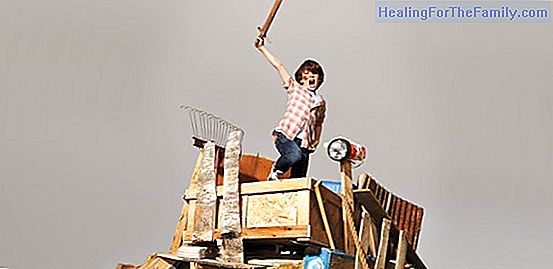Problems in the knees of children: Baker's cyst
One of the biggest fears of parents is when a lump appears in the body of our children, in this case in the knees. We're talking about Baker's cyst, let's know. A Baker cyst (popliteal cyst) is a fluid-filled sac that forms behind the knee. This makes you feel your knee tense and sore. These cysts a
One of the biggest fears of parents is when a lump appears in the body of our children, in this case in the knees. We're talking about Baker's cyst, let's know.
A Baker cyst (popliteal cyst) is a fluid-filled sac that forms behind the knee. This makes you feel your knee tense and sore. These cysts are very common and can be caused by anything that inflames your joints, including arthritis.
Baker's cyst on the knees of children

Usually in young children, other symptoms such as stiffness or local pain are not observed, although in adolescents if they occur. The mass increases in size when the knee is fully extended and disappears when the knee is flexed. The mass is hard, firm and can be intuited by placing a strong light on the mass, evidencing the presence of liquid material.
It is very important to review with great care the articulation of the knee in children, in order to look for signs of subluxation or early osteoarthritis.
Why is Baker's cyst produced?
It is not known, clearly, what is the mechanism by which it occurs. It seems to be related to the development of the knee, but unlike the adult, its presence does not reflect any type of alteration in the knee joint.
It can be caused by distension of bags filled with gelatinous fluid from the tendon sheath on the back of the knee, although it can sometimes originate from the joint itself.
Symptoms of Baker's cyst on the knees of children
- Swelling appears in the area behind the knee. The swelling is caused by the fluid that forms the cyst and which at the same time produces inflammation of the area. This swelling looks like a lump on the back of the knee and is best seen standing with the knee straight.
- Some tension is detected behind the knee. When fluid accumulates in the cysts, pressure is exerted on the back of your knee. It usually feels as if your knee is about to explode, especially standing with your leg straight; that is, when the skin around the knee is fully stretched and the sensation of tension is perceived.
- Control of stiffness around the knee. The stiffness differs from the tension in that if the knee is stiff, you will feel a lot of discomfort when flexing it. On the contrary, with the tension you will feel the knee like a water balloon about to explode. You may feel the knee stiff because the cyst causes inflammation of the muscles and joints of the knee, which will make it stiff.
- Pay attention to any pain you feel in the back of your knee. When the cyst puts pressure on the nerves behind the knee, you will definitely feel pain when you move your knee a lot.
How are pathologies diagnosed in the knee?
The diagnosis is made when the child is examined, the mother reports that on certain occasions, especially after physical activity is larger, when getting up is small and increases in size during the day. These cysts are often discovered accidentally by the parents, for example after a bruise on the child's knee. The best way to see it for the parents, is with the child lying down and the knee stretched, noticing in the inner part of the back of the knee a prominence that does not appear in the other healthy knee. In general, the physical examination is sufficient to diagnose Baker's cyst.
If the cyst is large, causes pain or has grown rapidly, it should be studied with some imaging test. Computed tomography (CT) and Nuclear Magnetic Resonance (NMR) will clearly indicate if the cyst has liquid density, defines the relationship with the rest of the structures and guides the thickness of the cyst wall.
In general, an ultrasound is recommended, confirming the diagnosis and measuring the size of the cyst.
Treatment for Baker's cyst in the knees
The initial treatment is observation, since the cyst usually tends to disappear, the pediatrician must explain to the parents the nature of the lesion and that there is no possibility of malignancy, in research works has determined that
approximately 80% of the cysts disappear in the course of 2 to 3 years , in case the mass grows significantly, which limits the activity of the child or that begins to present pain, the surgical indication does not have a discussion It is not recommended to aspirate the cyst or the infiltration with steroids because with these techniques it always tends to reproduce.If it causes pain in the mobility of the knee, the pediatrician may suggest taking an anti-inflammatory or an analgesic so that the pain or acute discomfort will subside.












